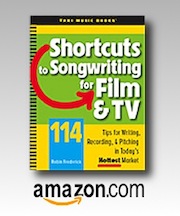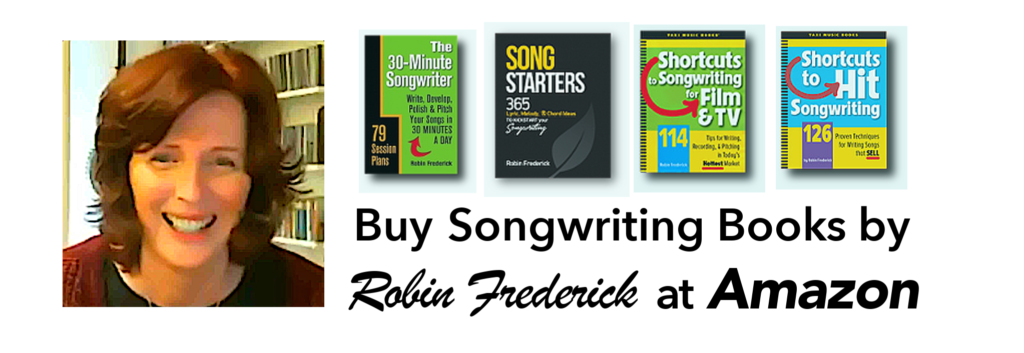
Thousands of songs are used in TV shows, films, and commercials each year. For every song that’s placed, many are auditioned—often hundreds—but only one is chosen. And you want that song to be yours.
The song that will get the job is the one that enhances the emotion and memorability of the scene for the viewers. Is a character discovering real love for the first time? The song needs to evoke that feeling of innocence, yearning, and wonder for the audience. Is the film set in a small town in the 1950s? The song needs to make us feel that we’ve traveled back to another time and place. And the right song can bring the whole thing to life!
With that in mind, it may seem a little strange that most of the songs that are placed in film and TV are written and recorded first, then pitched to these projects. Many of these songs are part of a CD released by an independent artist or band – that’s right, they’re not signed to mainstream record labels and publishers.
When the songwriters wrote and recorded these songs, there was no way to know how they would eventually be used in a film or TV scene. So, if you don’t know how your song will be used, how can you craft it to increase your chances of a placement? Well, let’s just say that some songs work better than others. Here are a few tips that will help you write a song that will work for dozens of scenes.
 Keep Your Lyric Universal
Keep Your Lyric Universal
Music users in the film and TV market often say they’re looking for songs with “universal lyrics.” If you’re writing songs for film and TV, you need to know what that means.
A universal lyric is…
- A lyric that a large number of people can identify with or relate to.
- A lyric that will not conflict with the specific content of a scene.
A good lyric for film and TV is universal enough to allow the song to be used in a variety of scenes while still maintaining integrity, originality, and focus.
Of course, no song will work for every scene but some themes and situations occur more frequently than others – falling in love, breaking up, or overcoming adversity, for example. If you choose one of these, you’re more likely to be successful. Watch a few TV episodes and look for common themes. Chances are you’re already using some of them in your songs.
Imagery, emotional detail, and a fresh approach to your theme will all add muscle to a universal lyric, making it more appealing to film and TV. On the other hand, too many specific physical details, like place names, proper names, and dates, will limit the uses because they may conflict with the details in the scene itself. If you title your song “I Love You, Sheila” it could be confusing to viewers if there’s no character named Sheila in the scene.
Learn more about adding images and emotion to your lyric.
 Express Mood & Energy in your music
Express Mood & Energy in your music
Filmmakers have always used instrumental music to communicate mood, energy, and atmosphere to the audience, from soaring love themes to the high anxiety of a fast-paced action cue. A song that works well for film and TV is one that, like an instrumental cue, uses melody, chords, pace, and rhythm to evoke a single mood or energy level.
If you’ve written an uptempo song about a wild party or a slow song about lost love, you’re already using tempo (pace) and rhythm to express energy or mood. Songwriters often do this instinctively, but you can hone that ability for the film and TV market, making your music even more expressive and useable. Like a film composer, you can choose a tempo and groove that physically express the energy level you want, then back it up with chords melody, and lyrics.
Watch a few scenes with instrumental accompaniment. You’ll hear it under almost any emotional scene. Notice how the composer evokes feelings. Is it a slow pace with a long smooth melody line? Or is it a fast, choppy piece? Minor or major? Try writing a song using some of those melodic tools to create an emotional feel.
Do you know how to rewrite your melody and make it unforgettable? Find out.
 Make an Instrumental Mix
Make an Instrumental Mix
While you’re arranging and recording your song, you’re creating something more, something that can provide many additional pitching opportunities for you and earn extra income. It’s a “song bed,” also known as a track-only mix, instrumental mix, or TV mix. Your song’s instrumental track, minus the vocal, is a stand-alone piece of music that can be in scenes, commercials, promo spots, and trailers.
Study the market
Notice what works and what doesn’t by watching shows that use a lot of songs, like Grey’s Anatomy, This Is Us, The Stand, New Amsterdam, Walker, or Pretty Little Liars. Try playing one of your own songs under a scene or two. Does it add to the emotional depth or energy of the scene? If not, then write a new song that you think would work.
Music Libraries pitch songs to film and TV shows. They want songs that will work for these uses. You can submit your demo to many music libraries through TAXI.com. Some Music Libraries, like Crucial Music will accept submissions online. (Click on “Artists” to find out how.) You don’t need to be an established artist or have lots of fans. They just want good songs that will work.
by Robin Frederick


